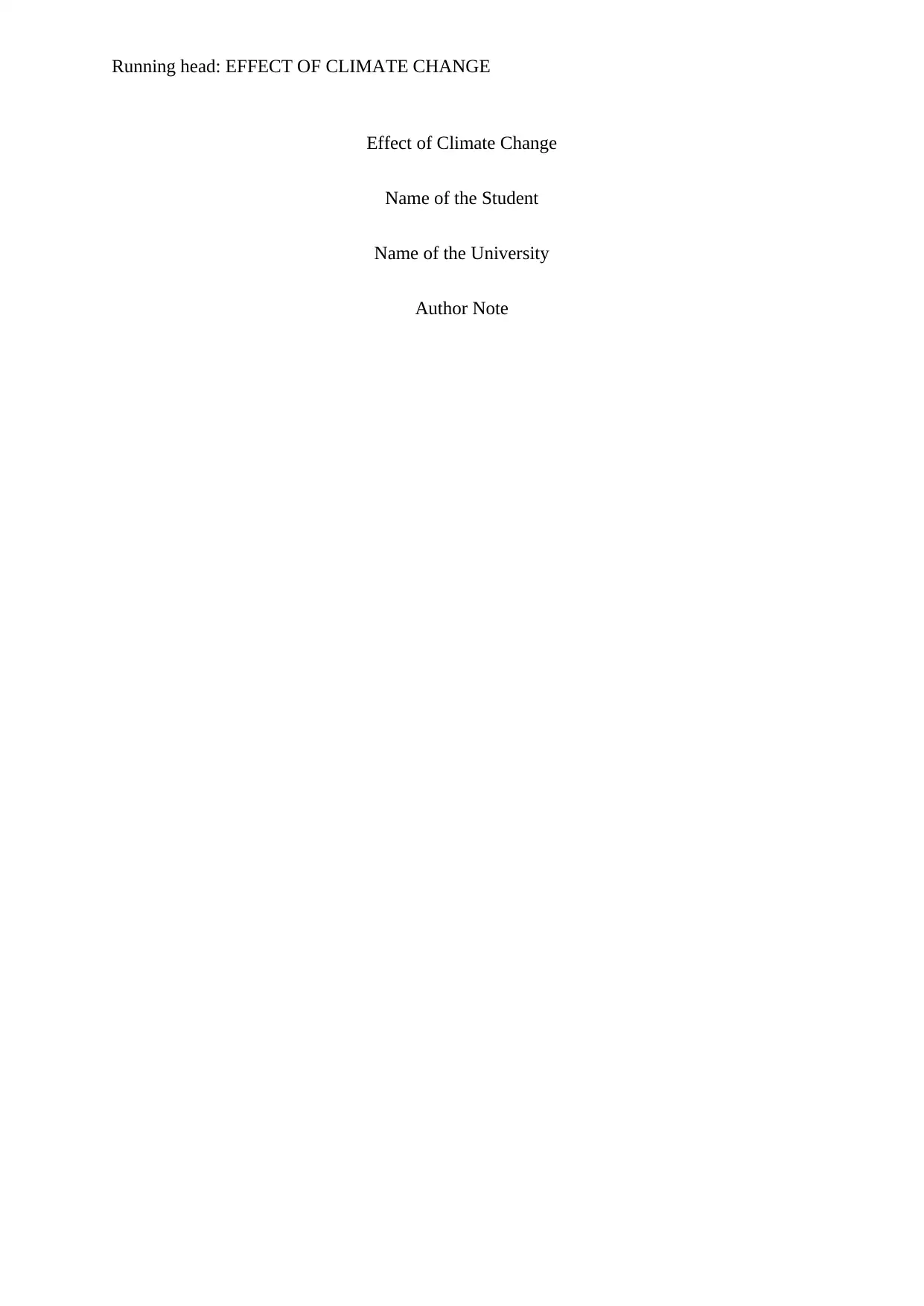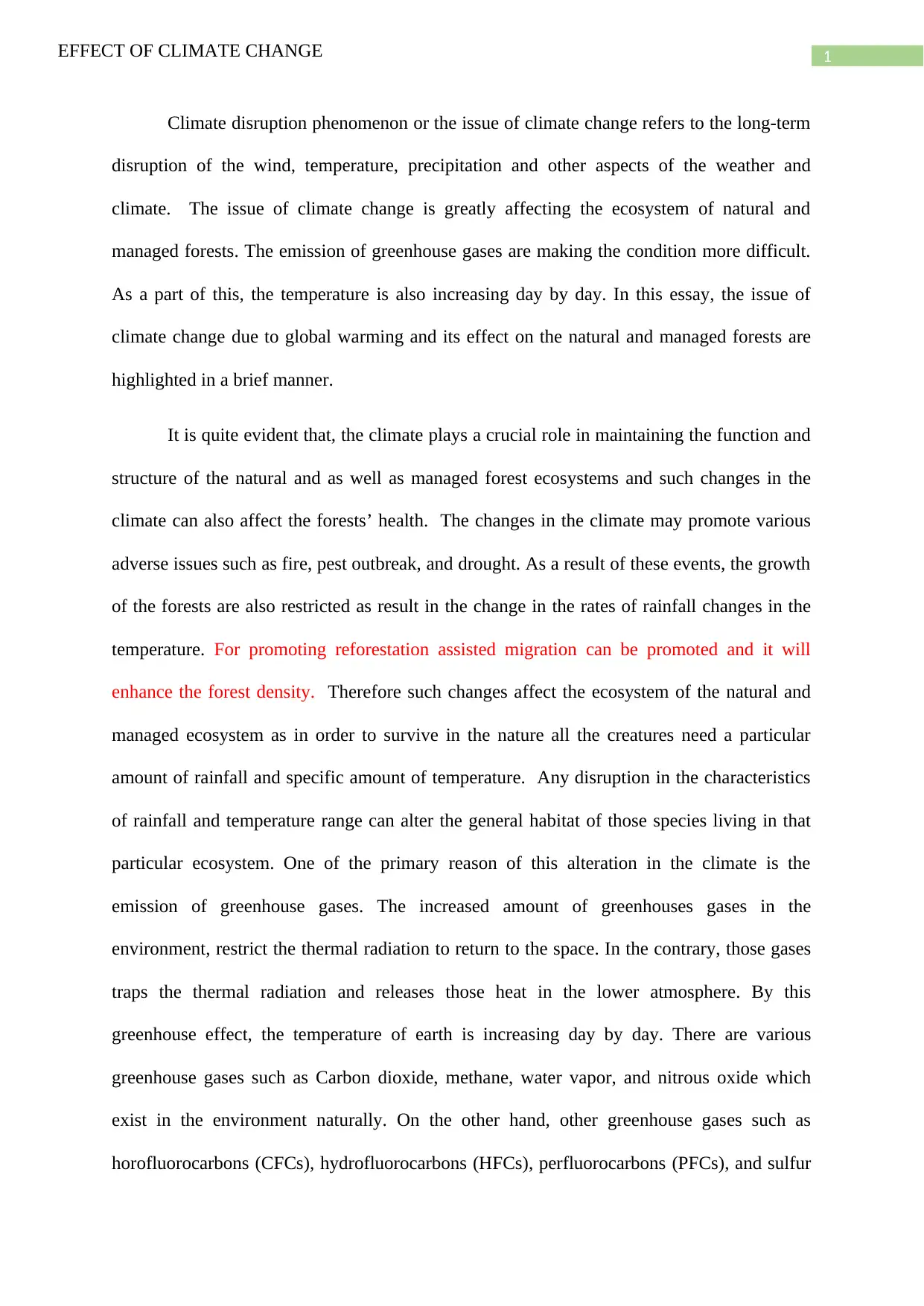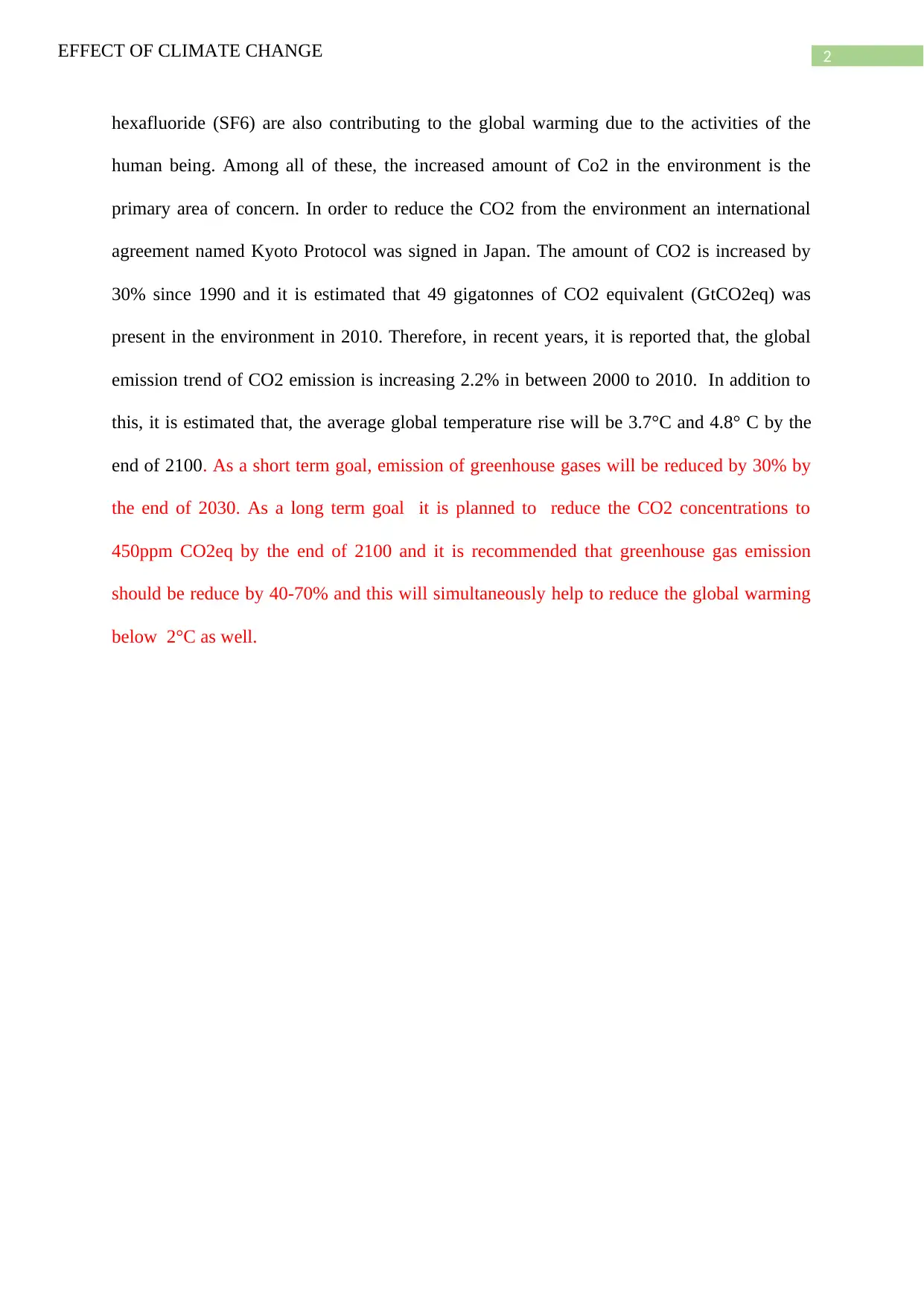Essay on Climate Change and its Effects on Natural and Managed Forests
VerifiedAdded on 2023/01/23
|3
|643
|100
Essay
AI Summary
This essay examines the effects of climate change on natural and managed forests. It highlights how climate disruption, including changes in temperature and rainfall, impacts these ecosystems, leading to issues like fires, pest outbreaks, and reduced forest growth. The essay emphasizes the role of greenhouse gases, particularly CO2, in driving global warming and the resulting increase in global temperatures. It discusses the Kyoto Protocol and the need to reduce CO2 emissions to mitigate these effects. Furthermore, the essay provides an overview of the current and projected trends in CO2 emissions and temperature increases, along with the proposed short-term and long-term goals for reducing greenhouse gas emissions to limit global warming and protect forest ecosystems. The essay underscores the importance of reforestation and assisted migration as potential strategies for forest conservation and adaptation to climate change.
1 out of 3









![[object Object]](/_next/static/media/star-bottom.7253800d.svg)